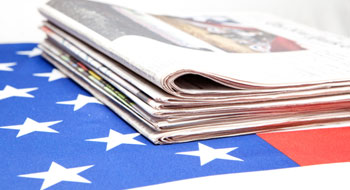

Despite showing a marginal increase in personal income, consumer spending in the U.S. remains stalled as inflation continues to gnaw away at income gains.
Chris Christopher, senior principal economist at Lexington, Mass.-based IHS Global Insight, expressed concern over the dwindling consumer spending pattern in the U.S. in a recent commentary on personal income and consumption in May.
“May was not a good month for the consumer,” he said. “It was mostly filled with bad news such as falling home prices, a volatile stock market, higher motor vehicle prices, decreasing job prospects, declining consumer confidence and rising non-energy prices.”
Consumer spending and confidence, he said, has soured in recent months. Higher gas and grocery prices are forcing consumers to pare back their purchases, while the weak job numbers and inadequate income growth haven’t helped matters.
Personal income grew only 0.3% in May for the second month in a row; wage and salary disbursements were in positive territory but had their weakest showing since last December, noted the report.
“Consumer spending was flat—its weakest showing since last June—and spending adjusted for inflation fell 0.1% for the second month in a row as higher food and core (excluding food and energy) prices are eating away the weak income gains,” according to the report.
Food prices are still increasing but the good news is that gasoline prices have started to fall, offering some relief to a very fatigued consumer.
The increase in the core prices should not cause spiralling inflation since there is considerable slackness in the labour market and wage growth is sluggish, said Christopher.
In addition, the inflation expectations as measured by the Reuters/University of Michigan survey have begun to decline due to falling gasoline prices.
The unemployment rate in May jumped to 9.1% as the private payrolls added 83,000 jobs, their weakest showing since June 2010.
Poor consumer spending means a weaker GDP in Q2, said Eric Green, chief economist and head of rates strategy with TD Securities, New York. Green was quoted in a Reuters report saying, “The data here is still reflecting the forces that were driving the soft patch over this period of time.”
“Real spending,” he said, “was down for the second consecutive month, not by a lot, but it pretty much ensures that you’re going to get a weaker GDP number in Q2 in the top side of 2% and most likely lower, because spending will have been closer to 1% over the quarter.”
Economists, however, are expressing optimism for the second half of the year, raising their growth expectation to 3.2%. The positive outlook is supported by the waning of the two biggest drags on the economy: gas prices and manufacturing, especially in the auto industry, which have been hammering the markets of the world’s largest economy.
While gas prices are already easing up, American auto and electronic manufacturers also are expected to increase their output as operations at Japan’s factories bounce back to pre-tsunami/earthquake levels.
